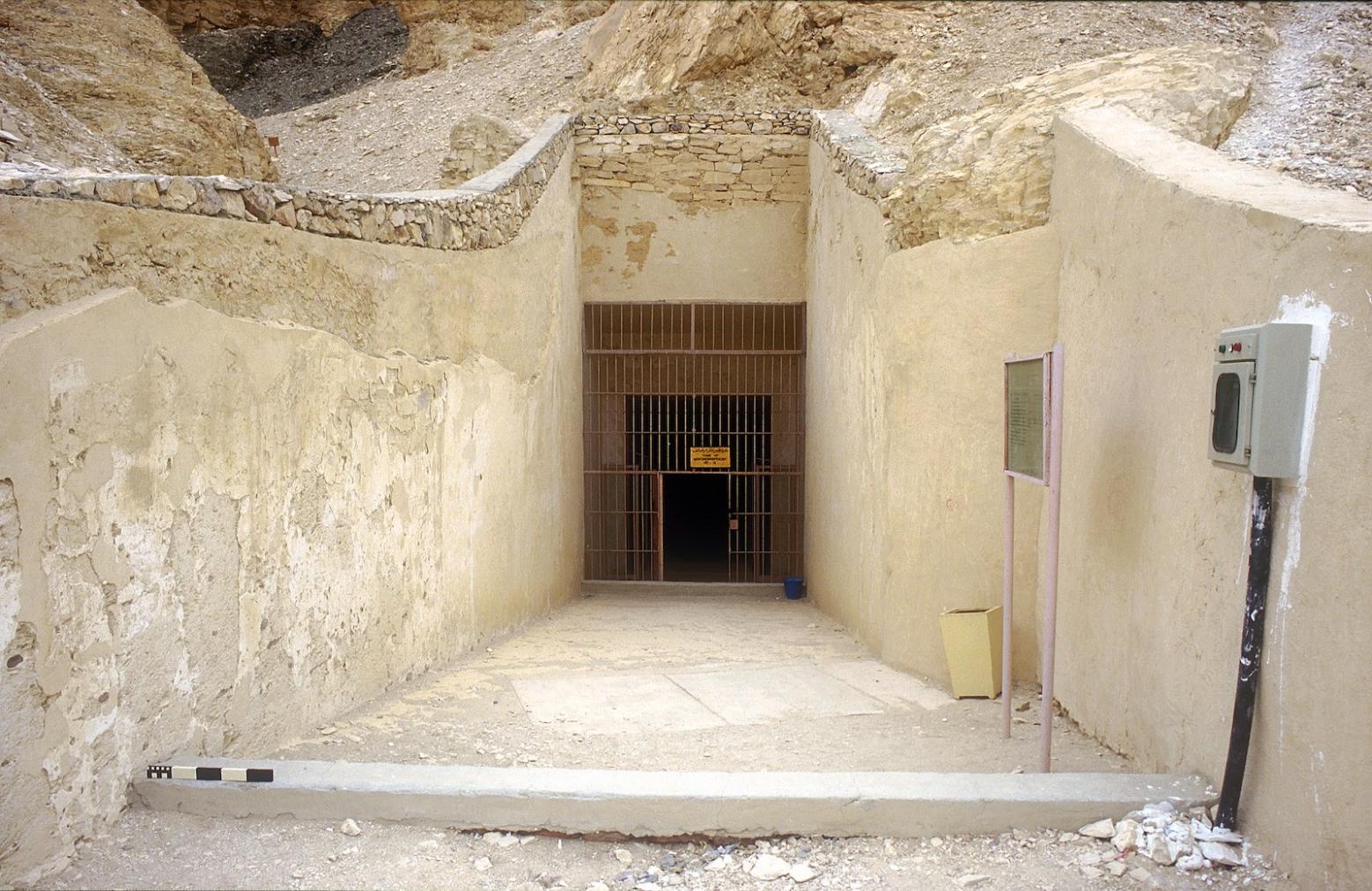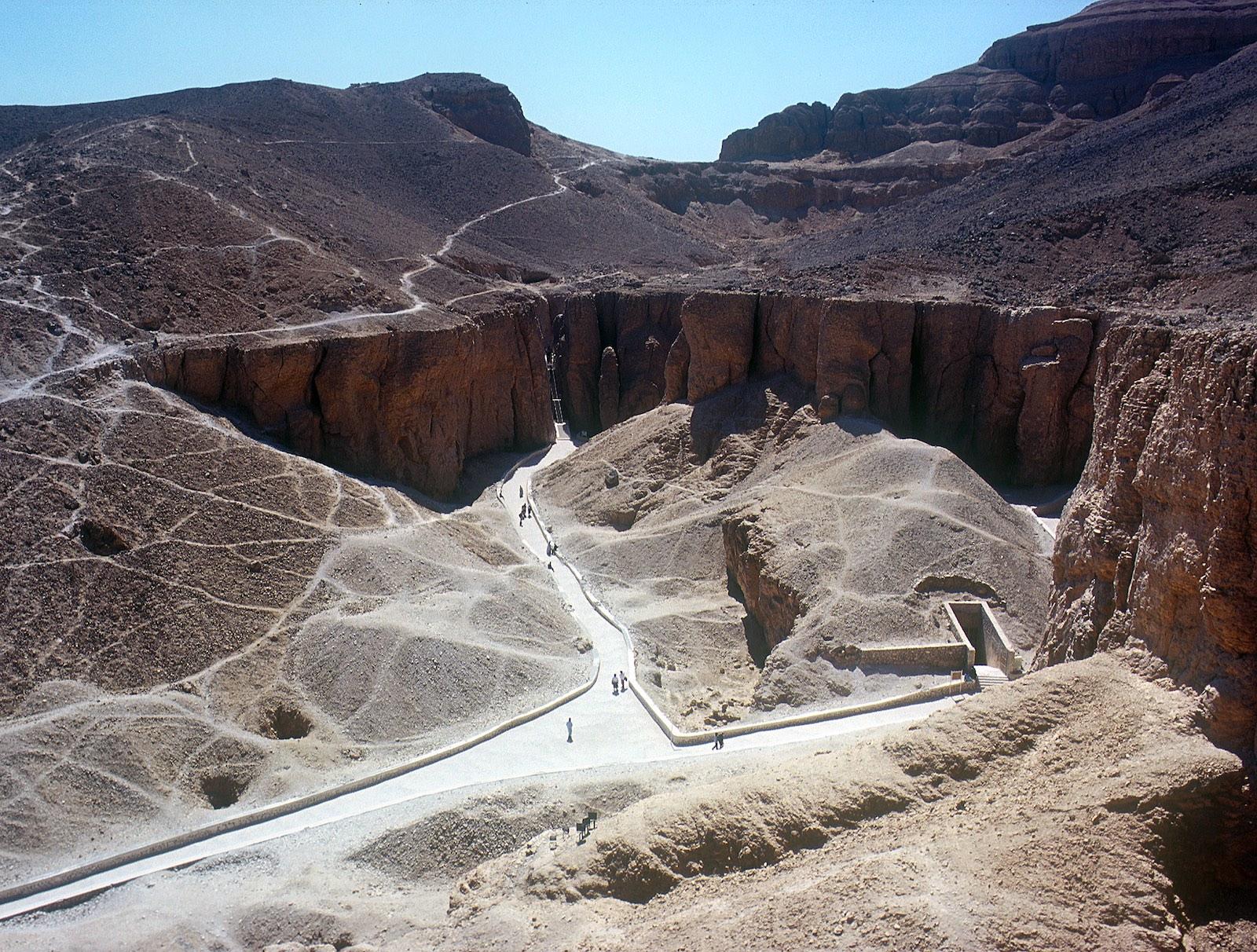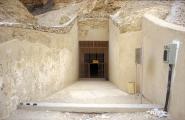KV 60
Sit-Ra, called In (?)
Entryway A
See entire tombRoughly cut steps lead steeply down to gate B from a cleft in the hillside.
Corridor B
See entire tombThere are two roughly cut recesses opposite each other in the right (southeast) and left (northwest) walls, each containing a wadjet eye. The floor in the center third of the chamber is lower than the front or rear.
Gate B
See entire tombThe gate leads into corridor B.
Gate Ba
See entire tombThe gate is located in the right (east) wall of corridor B.
Side chamber Ba
See entire tombThis small, undecorated side chamber narrows towards the left (northeast) end. Piled near the rear (southeast) wall are large limestone blocks. A side of beef was found in the chamber.
Gate J
See entire tombThe square cut gate leads from corridor B into burial chamber J.
Burial chamber J
See entire tombThe low, roughly cut, unfinished chamber is rectangular in plan. The chamber still contains the mummy of an unknown woman.
Chamber plan:
RectangularRelationship to main tomb axis:
ParallelChamber layout:
Flat floor, no pillarsFloor:
One levelCeiling:
Flat
About
About
Noteworthy features:
Site History
An inscription on one Coffin bore the name and title, royal nurse, In. In has been thought by some to be Sit-Ra, called In, royal nurse of Hatshepsut. The mummy is now in the Egyptian Museum, Cairo. The other, still unidentified mummy remained in situ. Thomas suggested it might be the mummy of Hatshepsut, relocated by Thutmes III.
Dating
This site was used during the following period(s):
Exploration
Conservation
Conservation History
During Ryan's work on the tomb in 1989, a wooden box was built to hold one mummy, and a metal cover was set over the pit entrance.
Site Condition
The tomb was excavated by Carter and then closed again. It was relocated by Donald Ryan of Pacific Lutheran University.
Hieroglyphs
Sit-Ra
 Daughter of Ra
Daughter of Ra
sAt-Raw
In
 Something sweet?
in(w)
Something sweet?
in(w)

Bibliography
Ryan, Donald P. Who is Buried in KV60? A Field Report. KMT 1/1 (1990): 34-9,53-4, 58.
Thomas, Elizabeth. The Royal Necropoleis of Thebes. Princeton: privately printed, 1966. P. 137.
Weeks, Kent R. (ed.). Atlas of the Valley of the Kings (=Publications of the Theban Mapping Project, 1). Cairo: American University in Cairo Press, 2000. Map sheet 68.
Wilkinson, Richard H. and Carl Nicholas Reeves. The Complete Valley of the Kings. London: Thames and Hudson, 1996. P. 186.


